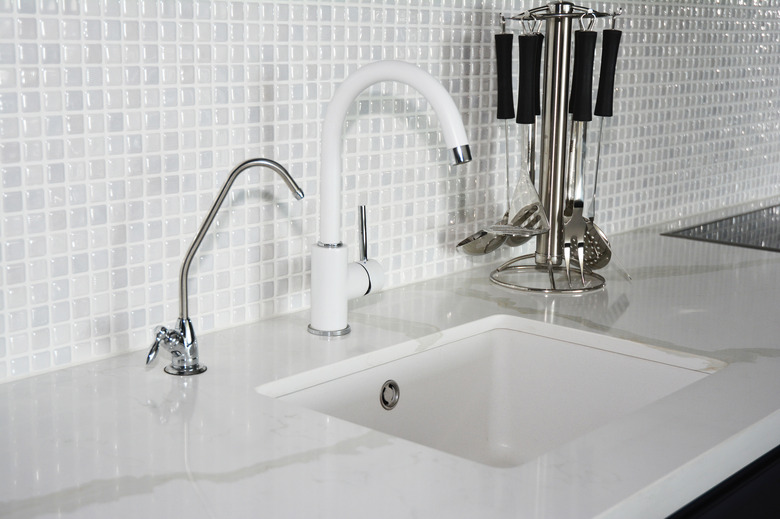How To Remove A Faucet Seat That Is Stripped
The faucet seat is a fitting in the bottom of the faucet valve, with a hole in the middle that allows water to flow. On some faucets, including two-handle compression and cartridge faucets, this seat is removable.
There is often no reason to remove it, but you might have to if the faucet is very old and you have very hard water. When mineral deposits collect round the inlet hole, the valve can't close all the way, and the faucet leaks.
You can buy a faucet seat removal tool, or seat wrench, at any hardware store. Designed specifically for removing valve seats, it looks like an extra-long Allen wrench, with a hexagonal tip on one end and a square tip on the other. If the seat is lodged too tightly, and you end up stripping the inlet hole with the seat wrench, you can get out of the predicament with a flat-head screwdriver and a pipe wrench.
Look Inside the Valve Before You Do Anything
Not all valve seats are removable, and the way to tell is to look inside the valve housing with a flashlight after you've disassembled the faucet and removed the valve. If the hole in the bottom of the seat is square or hexagonal, the seat is removable, and you're good to go. If the hole is round, on the other hand, the seat isn't removable. If it's cracked or chipped, you have to replace the faucet.
Another reason to look in the valve housing is to determine whether the leak is being caused by scale buildup on the valve seat. If so, there's an easy way to clean it. Plug the hole with a small, bunched-up piece of plastic wrap or rubber, then fill the valve with vinegar and let it sit overnight to dissolve the scale.
If your inspection reveals nicks or other damage to the seat, and the seat is removable, you can replace it with a new one, which you should be able to find at a plumbing supply outlet. You can also take it to a machinist with a faucet seat grinder and have it reground, but replacement seats are inexpensive, so you would only need to do this if you can't find a suitable replacement.
Read more: How to Troubleshoot and Repair a Faucet
Using a Faucet Seat Removal Tool
Besides the double-tipped variety, you can also buy a T-handle faucet seat wrench, and both types work equally well. Your inspection will reveal whether you need the hexagonal or square tip. Inset that tip into the hole in the seat and turn the handle counterclockwise to unscrew the seat.
If the faucet is old, you'll probably find the seat difficult to turn. If you put too much torque on the wrench, you could strip the hole. Before you do that, mist some spray lubricant inside the valve housing and wait 10 minutes for it to work before trying again. Despite your best efforts, however, the wrench may end up spinning inside the hole and stripping the seat anyway.
How to Unscrew a Stripped Seat
Some seat wrenches have tapered tips, so you can often jam them deeper into the hole by tapping with a hammer. You can also use a flat-head screwdriver if you don't have a seat wrench.
Tap the screwdriver into the hole at the base of the valve seat with a hammer, being careful not to tap hard enough to crack the seat. When the screwdriver is wedged tightly, grip the handle with a pipe wrench and use the wrench as a lever. If the screwdriver spins without spinning the seat, tap it in a little deeper, spray more lubricant and try again until you're successful.
